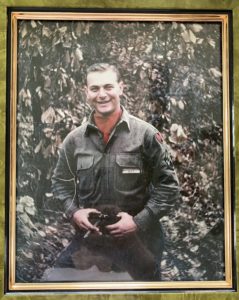
Robert Roth
Robert Roth found himself in Korea by way of Bloomsburg State College. Playing on a football scholarship, as a freshman, he wasn’t starting and receiving much playing time, so he left college and decided to play semi-professional football in the coal regions of Pennsylvania instead. As a result of leaving college, he had to report to the draft board as being eligible for the draft. In January of 1951, he was drafted into the Army where he served for the next two years. He did his basic training at Camp Polk in Louisiana. From there his unit was sent to Fort Benning, Georgia where they would perform artillery demonstrations at Fort Benning. In approximately March of 1952, he was sent to Korea. To get to Korea, his unit was flown to Washington and departed there by ship to Korea. The ship arrived at Incheon and was sent from there to the front line not far from Seoul to the Kumeu Valley (no-man’s land). His unit’s job was communications. He commanded six crews whose jobs were to lay communication wires throughout no-man’s land. He and his crew would be sent out at night to place communications wires to designated spots. They were frequently under fire, mostly by mortar. He was successful in his missions and was rewarded with additional responsibilities. At the time of discharge, he had about 35 men under him. He left Korea in approximately January of 1953.
Korean War - Key Events
January 17, 1950
North Korean leader Kim Il-Sung proposes the “liberation” of South Korea to Soviet officials. Weeks of telegram exchanges between Beijing, Moscow, and P’yŏngyang follow, and by early spring Kim has secured assurances of support for the invasion from Soviet premier Joseph Stalin and Chinese leader Mao Zedong.
These events are taken from the Encyclopedia Britannica

Comments
Likes 0
You must be a registered user to comment or like - please register to join us!